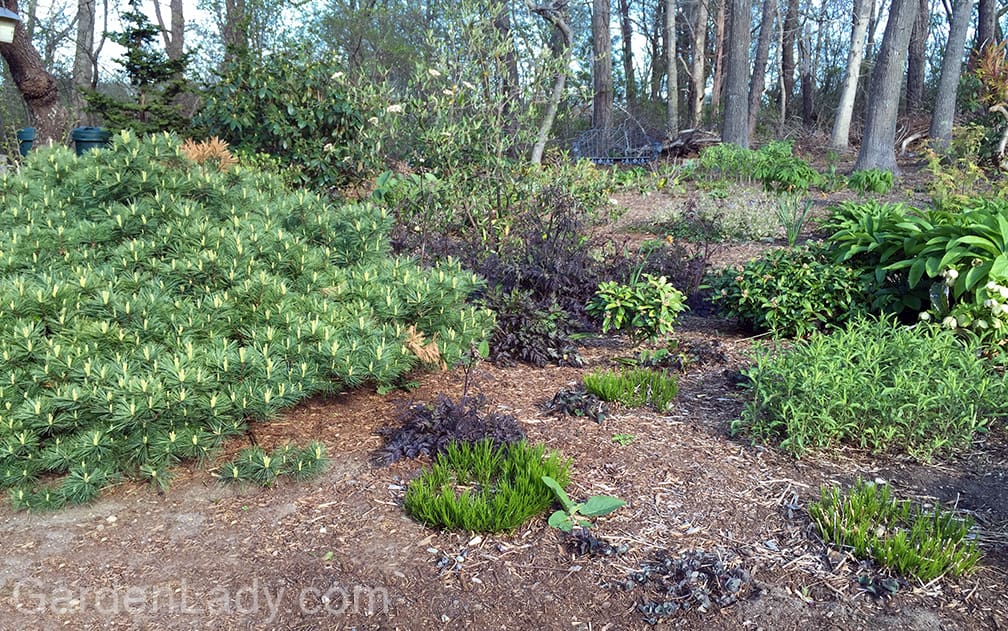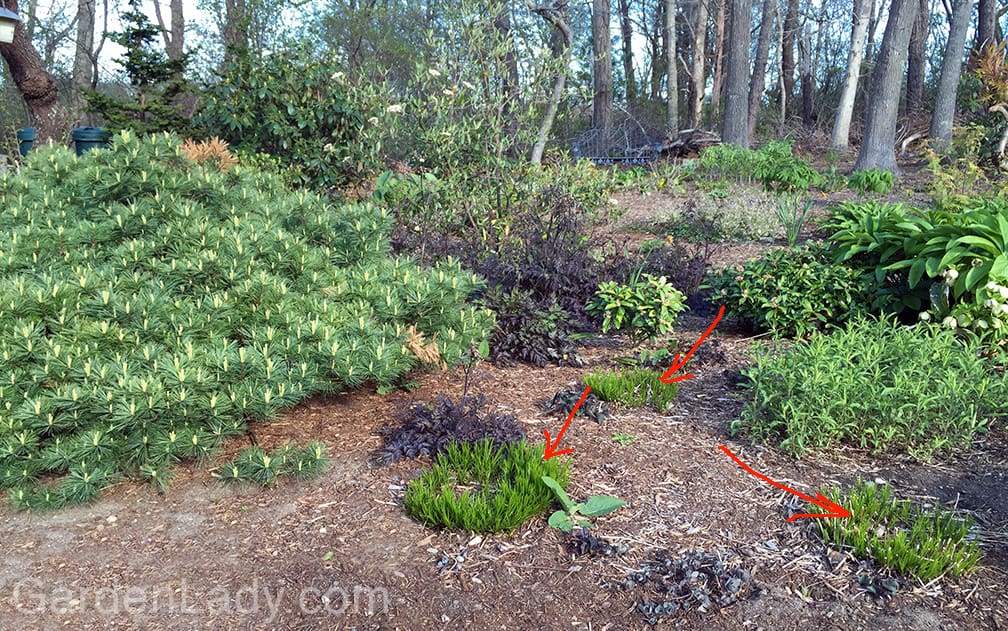Since every garden is different and what is going on in any given month is completely regional, it’s impossible to make a “garden tasks for May” list that would be meaningful for everyone. But it occurs to me that what I can do is to write a few posts about what I’m doing in my own gardens in a given season, and hopefully that will be of use to others.
So here is a shot of one small area of my landscape, and what I need to do here in the next week or two.

This area of my landscape is in shade until about 2 PM. So although I call this “the shade garden” it does get direct sun from about 2 to 6.

The first thing any gardener should do is remove weeds. Here are the plants in this photo that need removal. Yes, some of them are self-seeded plants that I normally like…but part of being a good gardener is not letting a plant stay when it’s growing in the wrong place. So the Verbascum circled here has to go.

The arrows point to clumps of Vernonia lettermannii ‘Iron Butterfly’. This is a great native perennial that looks grass-like early in the season and then flowers purple in the fall. Each of these clumps looks small and reasonably placed now, but once they grow to their 18 to 20 inch height, and 24 inch width, they will prove to be crowded in this area. Last year I noticed that these should be transplanted. It’s tempting in the spring to ignore such perennials because in May they don’t look like they are crowded at all….but that would be ignoring what we’ve seen in previous seasons. Time to take action and move these Vernonia to a better location.

Another plant that seems small and not-a-problem in the spring is this Aster. It is Raydon’s Favorite (aka Symphyotrichum oblongifolium ‘Raydon’s Favorite’) and it’s one of my faves as well. But this plant requires two things in the spring. First, I need to edit it back so that it doesn’t continue to spread into this region and dominate the entire bank…we are only seeing the tip of the asters in this photo, and this area really should be dug out. Secondly, this aster benefits from being sheared in mid to late May. I cut the top two to six inches off with a shearing tool and this makes the plant shorter and thicker for the rest of the summer and blooming season. So two tasks here – editing the circled section down (and being willing to throw the removed plants into the compost!) and shearing the remaining asters down.

Finally, this Minuta pine, which is one of my favorite dwarf white pines of all time, has a few dead branches. Do I know why these pieces died? No…but the bottom line is that removing them will make the plant instantly look better, and make it easier to monitor if this damage is on-going or not. In the spring it’s ALWAYS a good idea to prune out deadwood.


That is a lot of work good luck and keep up the good work.I’m looking forward to see the after photo 🙂